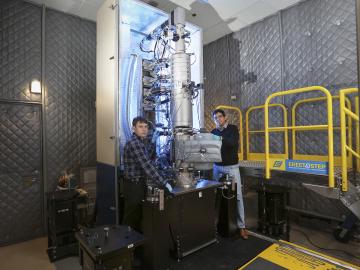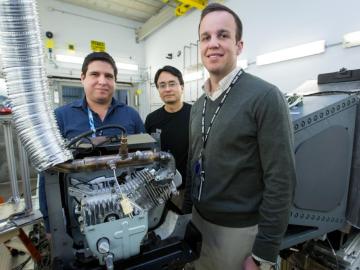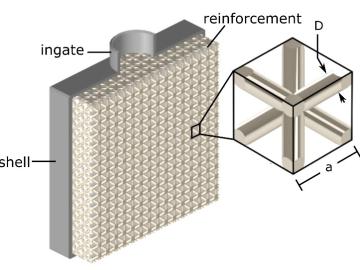
Filter News
Area of Research
- (-) Energy Science (178)
- (-) Materials (114)
- Advanced Manufacturing (8)
- Biological Systems (2)
- Biology and Environment (140)
- Biology and Soft Matter (1)
- Computational Biology (2)
- Computational Engineering (3)
- Computer Science (9)
- Electricity and Smart Grid (1)
- Energy Sciences (1)
- Functional Materials for Energy (2)
- Fusion and Fission (13)
- Fusion Energy (8)
- Isotopes (2)
- Materials for Computing (14)
- Mathematics (1)
- National Security (41)
- Neutron Science (129)
- Nuclear Science and Technology (17)
- Nuclear Systems Modeling, Simulation and Validation (1)
- Quantum information Science (4)
- Supercomputing (98)
News Topics
- (-) Advanced Reactors (9)
- (-) Bioenergy (30)
- (-) Composites (19)
- (-) Cybersecurity (10)
- (-) Energy Storage (85)
- (-) Environment (64)
- (-) Hydropower (3)
- (-) Machine Learning (10)
- (-) Mercury (3)
- (-) Microscopy (29)
- (-) Neutron Science (42)
- (-) Summit (6)
- 3-D Printing/Advanced Manufacturing (90)
- Artificial Intelligence (13)
- Big Data (7)
- Biology (12)
- Biomedical (10)
- Biotechnology (4)
- Buildings (38)
- Chemical Sciences (33)
- Clean Water (10)
- Computer Science (36)
- Coronavirus (14)
- Critical Materials (19)
- Exascale Computing (3)
- Fossil Energy (2)
- Frontier (3)
- Fusion (7)
- Grid (40)
- High-Performance Computing (9)
- Irradiation (1)
- Isotopes (13)
- ITER (1)
- Materials (94)
- Materials Science (90)
- Mathematics (3)
- Microelectronics (1)
- Molten Salt (3)
- Nanotechnology (41)
- National Security (6)
- Nuclear Energy (22)
- Partnerships (16)
- Physics (28)
- Polymers (21)
- Quantum Computing (3)
- Quantum Science (12)
- Security (7)
- Simulation (4)
- Space Exploration (5)
- Statistics (1)
- Transportation (70)
Media Contacts

The U.S. Department of Energy’s Oak Ridge National Laboratory today unveiled Summit as the world’s most powerful and smartest scientific supercomputer.

A scientific team led by the Department of Energy’s Oak Ridge National Laboratory has found a new way to take the local temperature of a material from an area about a billionth of a meter wide, or approximately 100,000 times thinner than a human hair. This discove...

Researchers used neutrons to probe a running engine at ORNL’s Spallation Neutron Source

A new manufacturing method created by Oak Ridge National Laboratory and Rice University combines 3D printing with traditional casting to produce damage-tolerant components composed of multiple materials. Composite components made by pouring an aluminum alloy over a printed steel lattice showed an order of magnitude greater damage tolerance than aluminum alone.

A team led by the Department of Energy’s Oak Ridge National Laboratory has identified a novel microbial process that can break down toxic methylmercury in the environment, a fundamental scientific discovery that could potentially reduce mercury toxicity levels and sup...

Researchers have long sought electrically conductive materials for economical energy-storage devices. Two-dimensional (2D) ceramics called MXenes are contenders. Unlike most 2D ceramics, MXenes have inherently good conductivity because they are molecular sheets made from the carbides ...

For more than 50 years, scientists have debated what turns particular oxide insulators, in which electrons barely move, into metals, in which electrons flow freely.


